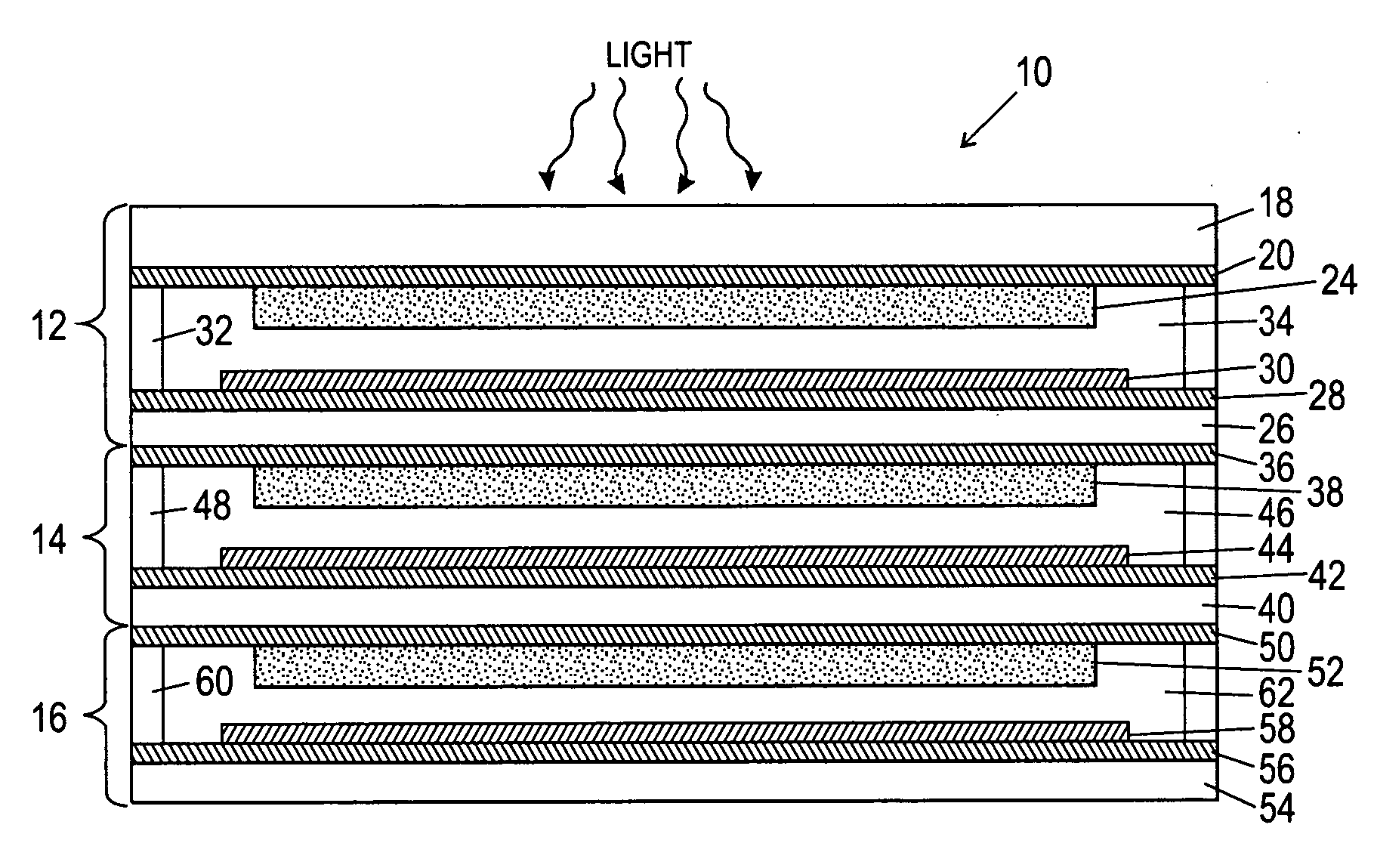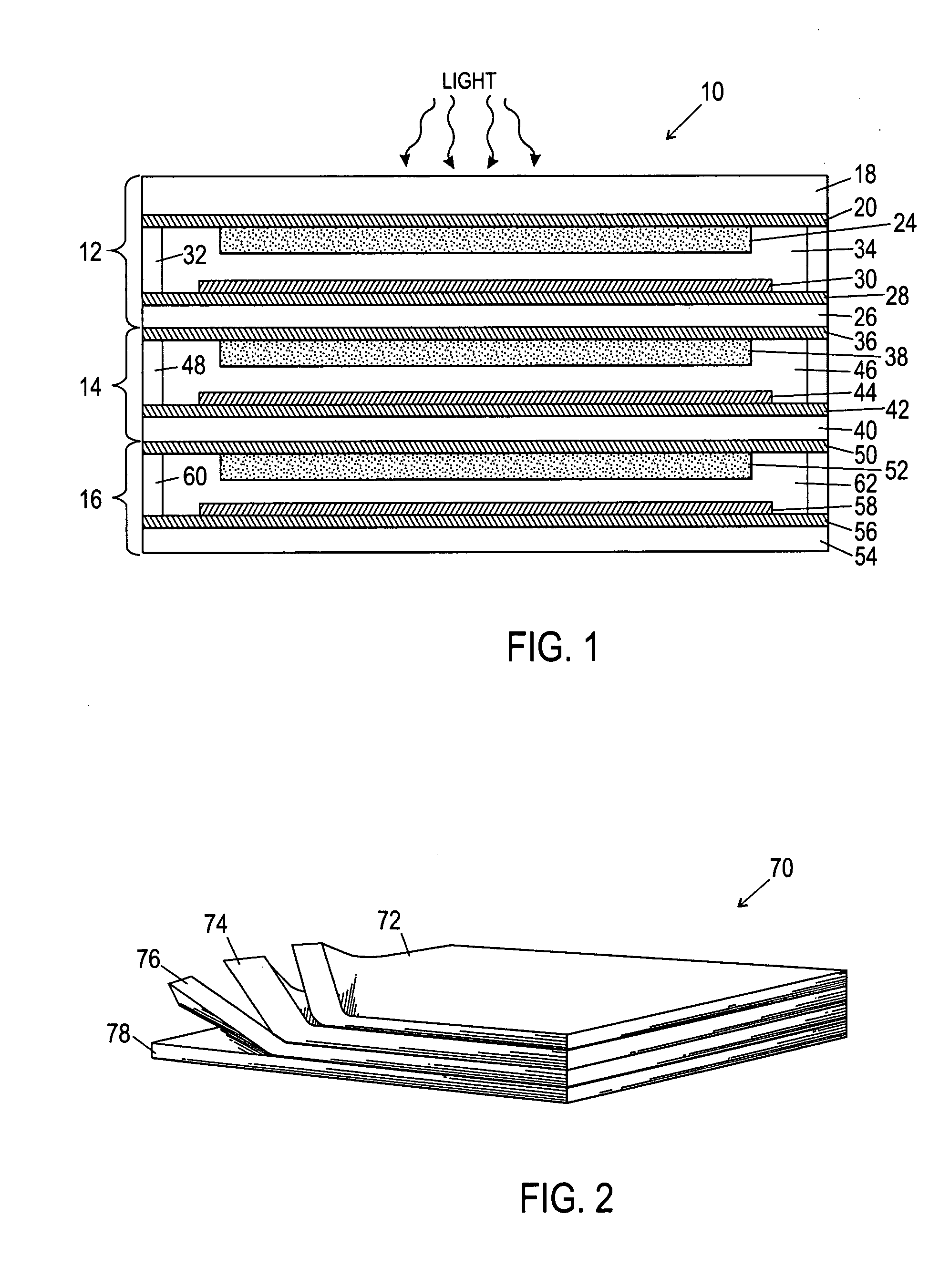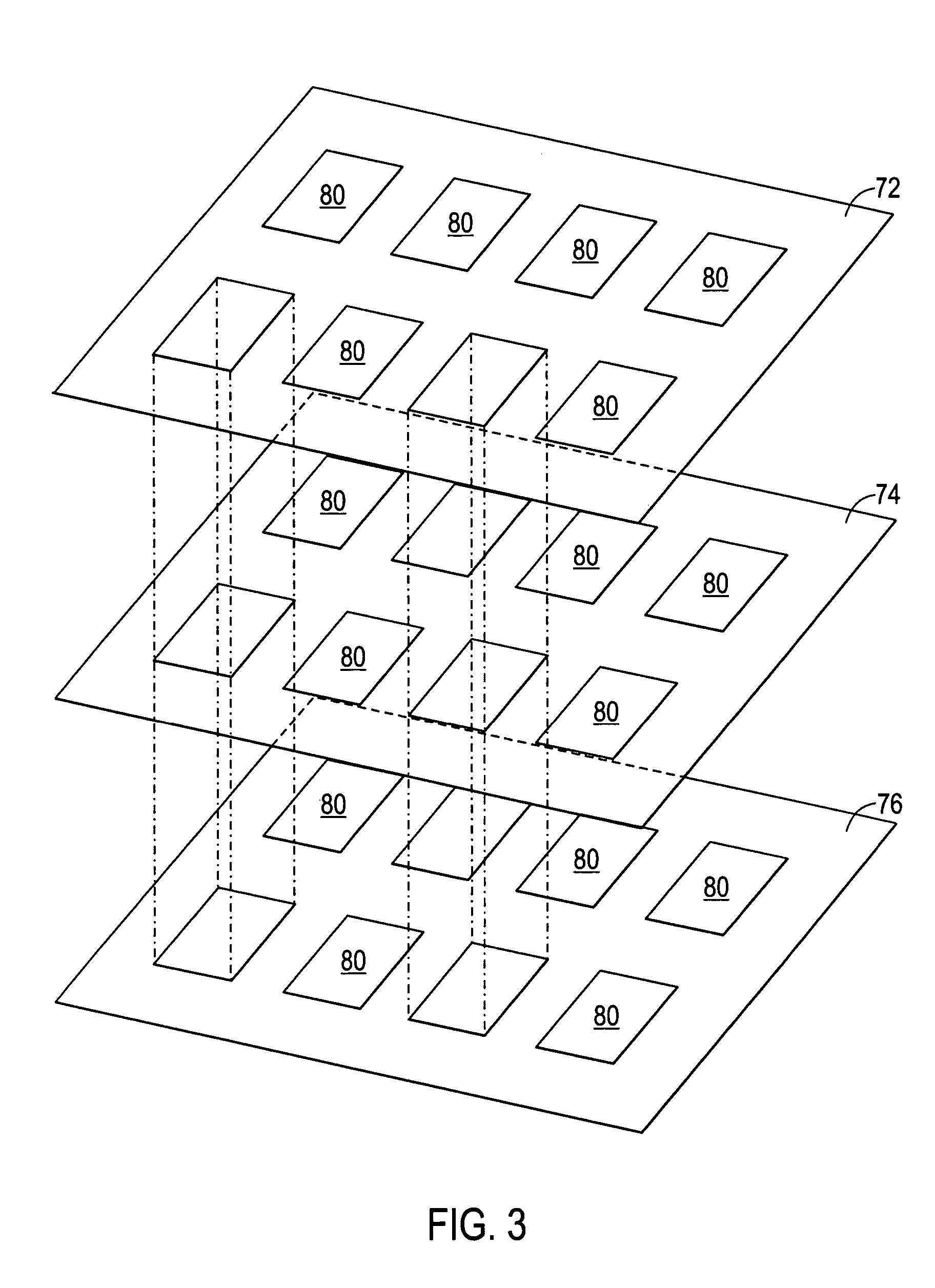Layer-to-layer interconnects for photoelectric devices and methods of fabricating the same
a photoelectric device and interconnection technology, applied in the field of photovoltaic cells, can solve the problems of high capital investment and operational expenses, high product cost, and difficulty in having a dye that is both strong and broad absorber
- Summary
- Abstract
- Description
- Claims
- Application Information
AI Technical Summary
Benefits of technology
Problems solved by technology
Method used
Image
Examples
Embodiment Construction
[0017] Organic electronic devices, such as photovoltaic (PV) devices, may be fabricated by depositing materials on substrates and laminating the substrates together to form a one or more solar cells stacked on top of each other. FIG. 1 illustrates a PV device 10 of the first embodiment of the present invention that comprises a plurality of PV modules 12, 14 and 16 arranged in a stack. Although the PV device 10 of FIG. 1 illustrates only three PV modules 12, 14 and 16, it should be understood that any desirable number of PV modules may be implemented in accordance with the present techniques. In addition, although FIG. 1 shows only one PV cell for each PV cell module, a PV cell module of the present invention can comprise a plurality of PV cells arranged in a grid pattern, as will be disclosed further below with reference to FIG. 3. Further, while the exemplary embodiment of FIG. 1 illustrates a dye sensitized PV cell, it should be understood that other types of PV cells may also be ...
PUM
 Login to View More
Login to View More Abstract
Description
Claims
Application Information
 Login to View More
Login to View More - R&D
- Intellectual Property
- Life Sciences
- Materials
- Tech Scout
- Unparalleled Data Quality
- Higher Quality Content
- 60% Fewer Hallucinations
Browse by: Latest US Patents, China's latest patents, Technical Efficacy Thesaurus, Application Domain, Technology Topic, Popular Technical Reports.
© 2025 PatSnap. All rights reserved.Legal|Privacy policy|Modern Slavery Act Transparency Statement|Sitemap|About US| Contact US: help@patsnap.com



